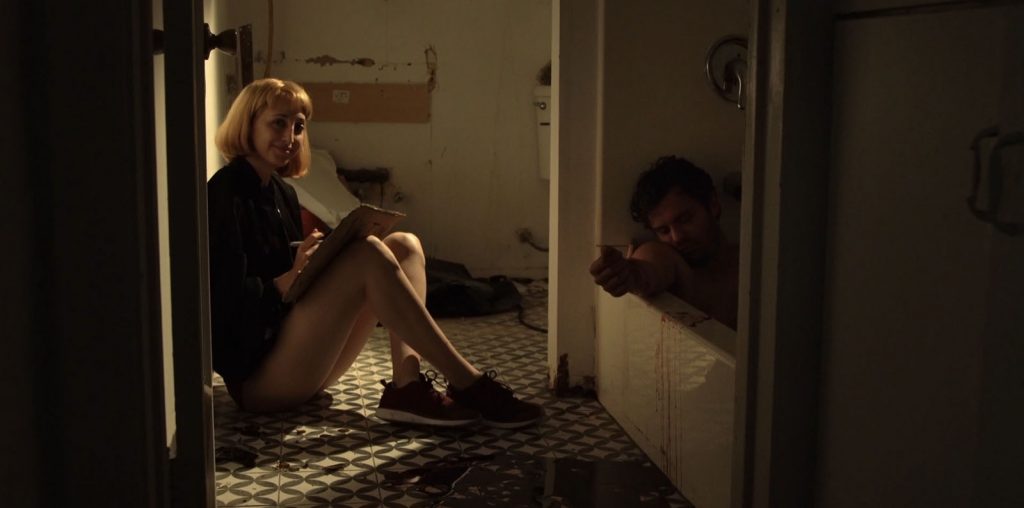
Should the dead be summoned back to the dimension of the living, and once returned, be condemned to eternal wandering? In keeping with these ponderings, should those who uproot the dead, and turn them loose, be revered, despised, or something far worse?
These major philosophical inquiries fuel the machinations of Casey T. Malone’s 2nd silent-installment of his Blood of the Witch Trilogy and is aptly named, Fortuna. Though released one year after Blood of the Witch, Fortuna may be considered a prequel, in that it provides reference points to the first film, and possible reasons why and how the characters evolve the way they do.
The story begins on a dark and snowy eve, at the graveside of Abby Thelma’s newly deceased father. Though we can’t readily see the grief stricken girl, since she’s hidden under her umbrella, Abby Thelma is disturbingly recognizable by her long striped stockings…
An intertitle informs us that Abby Thelma wants desperately to speak to her father one last time, but in her sorrow, is unable to do so. A subsequent intertitle ominously states that soon she will be able to converse with her father.
And so the troubled girl journeys through the make believe woods— the very same forest wherein that unlucky man of the first film of the series ventures— in search of a gypsy woman renowned for her abilities. Once inside the gypsy’s cobwebbed lair, Abby Thelma learns that only the gypsy’s husband, an illusionist for the circus, can part the veil between the living and the dead, and make communication possible. Unfortunately, or fortunately, depending upon personal interpretation, uncalled for spirits may also get through the veil; which of course, they do…
Don’t be mistaken. There’s nothing frivolous or trite about Fortuna; even if, at first glance, Abby Thelma’s quirky wardrobe, and the Pumpkin Vendor’s mask still gleaming its freakish grin, might lend itself toward that direction.
Aside from Malone’s superbly speculative writing, and the brilliant portrayals of his actors, Fortuna is also sparked by the clever techniques of its illustrator and graphic designer, John Baker. Malone’s animations and editing work in synchronization with Baker’s art to create unique block-style, geographic maps; the type found in early Registry of Deeds’ plan rooms. Examples of these are the precise locations of Abby Thelma’s cottage, the circus, and the gypsy’s home. We also see old fashioned route signs that lead us through the woods, with their index fingers. These tiny details show how very carefully Malone knows his history, and also compels us directly into his world, and those dreaded jaunts through the woods, whether we’re happy to travel them or not.
Again, as in the first movie of Malone’s Trilogy, pay critical attention to the original music of The Warshack Jazz, since it continues to be a driving expressionist-force in our understanding of the film’s narration.
For those Film Threaters too frightened to embark any further on Malone’s dubious escapade, keep in mind that Malone has a tight rein on his potent little fable, and the characters that traverse so easily in the shadowy spaces most dare not imagine. Still, I’ve been known to be wrong about such things… but try to be brave until next time, when we revisit the last of Casey T. Malone’s Blood of the Witch Trilogy.
This film was submitted for review through our Submission for Review system. If you have a film you’d like us to see, and we aren’t already looking into it on our own, you too can utilize this service.

